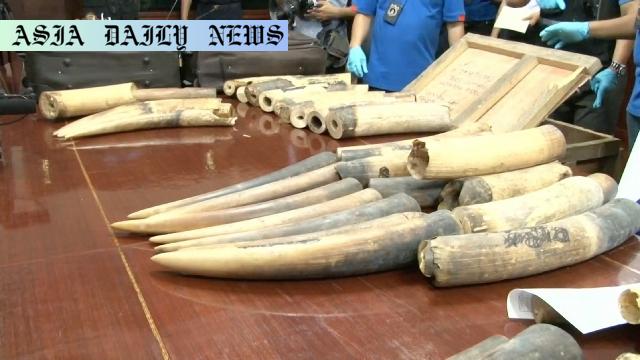Ivory Trade: NHK reports the alarming scale of illegal ivory trade across 185 nations, with key offenders and Japan’s domestic policies.

Introduction to the Illegal Ivory Trade
The illegal ivory trade has long posed a significant threat to elephant populations across the world. Despite international agreements and bans on the trade of ivory, especially under the Convention on International Trade in Endangered Species of Wild Fauna and Flora (CITES), the black market for elephant tusks remains active. This persistent issue highlights gaps in enforcement and global accountability.
The Historical Context of Ivory Trade Bans
CITES has played a pivotal role in attempting to regulate the ivory trade. In 1975, the convention outlawed trade in ivory from Asian elephants, and by 1990, African elephant ivory was also added to the ban. The goal was clear: protect the dwindling populations of elephants. Yet, over the past ten years, instances of illegal transactions have persisted, giving rise to alarming levels of ivory trafficking.
Key Findings: Nations Leading Illicit Trade
Based on data uncovered by Japan’s public broadcaster NHK from the CITES office, the extent of illegal ivory trade by nation over the past 10 years is staggering. Among 185 countries and regions, Vietnam ranks as the most active player in the illegal market, dealing with 73.7 tons of illicit ivory. This is followed by Nigeria and China, trafficking 42.6 tons and 39.7 tons of ivory, respectively. These figures underline the global nature of the problem and point toward regions requiring immediate attention.
Japan’s Controversial Role
While Japan ranked 38th in terms of illegal ivory trade with 1.7 tons recorded, the issue lies in the country’s domestic policies. Over 1.4 tons were seized overseas, and 240 kilograms were confiscated within Japan itself. The nation reportedly retains a large stockpile of ivory from imports made during the pre-ban era, which has created contentious discussions around permitted legal domestic transactions. Critics argue that these allowances create opportunities for laundering illicit ivory through legal channels.
Efforts to Combat the Crisis
Despite a small decline in illegal ivory transactions globally, lucrative markets and supply chains continue to pose substantial challenges for enforcement. Various nations and organizations are working to increase monitoring efforts and tighten loopholes in international bans. However, as long as legal domestic markets exist—like in Japan—the trade issue is unlikely to disappear entirely.
The Role of NGOs and Conservationists
Many non-governmental organizations and wildlife conservation agencies are heavily involved in combating the ivory trade. Figures such as Nishino Ryoko, working within international groups, have called attention to the scale of illegal transactions and the policies required to address them. Ryoko and other experts highlight the crucial need for discussions on how to handle existing ivory stocks to remove them from circulation entirely.
The Path Forward
To curb illegal ivory trade, countries need to adopt stricter measures against stockpile sales and outright bans on domestic markets. International cooperation is imperative to create uniformity in anti-trafficking laws and enforcement. Public awareness campaigns could also play a vital role in reducing the demand that fuels the illicit ivory trade.
Conclusion: A United Fight Against the Ivory Trade
The illegal ivory trade is a multifaceted issue requiring the collective efforts of governments, organizations, and global citizens. While nations like Vietnam, Nigeria, and China dominate in trade volumes, every country, including Japan, must evaluate its domestic practices. Without unified and stringent action, this threat to wildlife conservation will continue to push species like elephants closer to extinction.
Commentary
The Alarming Reality of the Ivory Trade
The revelations uncovered regarding the illegal ivory trade call for immediate and stringent action. It is disheartening to see how, even after decades of legal bans, the market for ivory continues to thrive. These figures shed light on not only the scale of the issue but also the gaps in our enforcement mechanisms. This is a global failure that transcends national borders. Each piece of ivory represents the life of an elephant, a life taken for mere ornamental value and profit. We must urgently question our current systems and attitudes toward wildlife conservation.
Japan’s Domestic Market: A Hidden Problem
What strikes me is Japan’s unique position in this crisis. While its figures may seem relatively low compared to more active regions, the allowance of domestic market transactions raises concerns. It’s unsettling that a legal loophole could undermine global efforts to curtail the ivory trade. If we are to have any hope of protecting elephant populations, countries like Japan need to take a hard stand against ivory trade completely, including with historic stockpiles.
The Path Forward: Education and Awareness
One of the most effective ways to combat this issue is public education. By informing people of the devastating impacts of ivory trafficking—not only on wildlife but on ecosystems and even communities involved—we can reduce demand for these products. Simultaneously, governments and international organizations must cooperate to close any loopholes and enforce stricter penalties for violators.
Ultimately, the fight against ivory trade is a broader fight for biodiversity conservation. It is incumbent upon us all—as global citizens—to push for and support policies that eradicate such harmful practices. We owe it to future generations to ensure they inherit a world where magnificent creatures like elephants can thrive freely.


